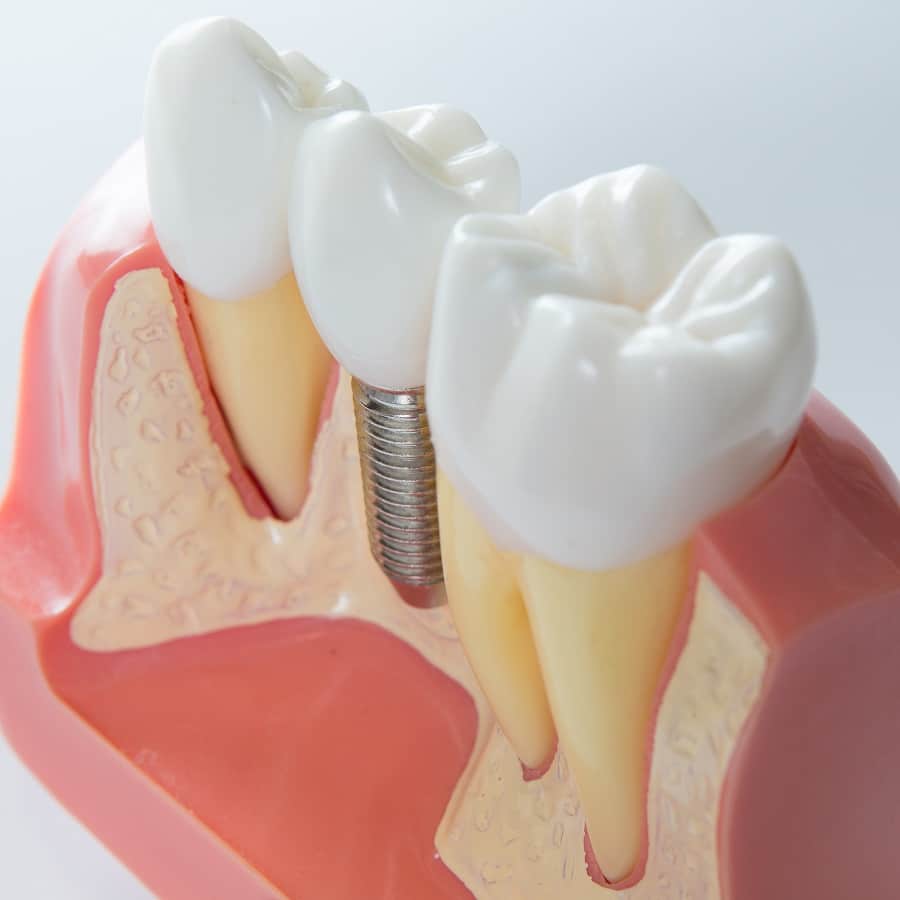Dental Implants
Despite our best attempts at maintaining strong, healthy teeth through good oral hygiene habits, there are still occasions when teeth become so damaged through injury or decay that they need to be removed from the mouth in order to protect the individual’s oral health and comfort. When this occurs, it is absolutely vital to replace these teeth as soon as possible. The gaps that are caused by missing teeth can lead to numerous oral problems and issues, including shifting teeth, misaligned bite, deteriorated jawbone, change of face shape and much more. This is where dental implants can help.

Understanding Dental Implants
A dental implant is a metal replacement of a tooth root. It is surgically placed in the jawbone so that replacement teeth can be mounted securely to it. Unlike dentures, dental implants are not removable and so remain fixed and sturdy. They do not require that adjacent teeth be filed down and prepared in order to help hold the replacement tooth in position. They are sometimes used to help support dentures or bridges so that they won’t slip or move. They may also be a better option than traditional bridges or dentures, which can sometimes be uncomfortable or even impossible to use. Most importantly, dental implants restore the structure and function of the mouth–allowing the individual to speak and eat more naturally.
Since dental implants are surgically placed in the jawbone, an individual absolutely must have healthy gums and adequate jawbone available to support them. Thin, soft or weak jawbones may require a bone graft prior to receiving a dental implant, or your dentist may recommend an alternative tooth replacement option. Where dental implants are appropriate, there are two main types that will be considered:
- Endosteal implants. Attaching these implants requires three main steps: first, they are surgically placed in the jawbone. Second, after the gum tissue has healed around the implant, a post is connected. Third, the artificial tooth is attached to the post.
- Subperiosteal implants. These implants are not surgically placed in the jawbone, but rather have a metal frame that is fitted onto the jawbone. When the gum tissue heals, it helps the frame to adhere firmly to the jawbone. As with endosteal implants, posts are attached to the frame and artificial teeth are attached to the posts.
Taking Care of Dental Implants
While they are not natural teeth, dental implants are meant to function just like natural teeth. This means that they also need to be very well taken care of in order to last a long time. Following are just a few of the key ways to take good care of your dental implants:
- Brush and floss daily. Just like your natural teeth need to be brushed twice every day and flossed once every day, so too do your dental implants. Your dentist may recommend a special, interdental brush to help you clean in between your implants more effectively.
- Visit your dentist twice a year. Dental examinations and professional cleanings twice a year can help to better protect your oral health by addressing minor issues before they become major problems. Your dentist can also check the structure and condition of your dental implant to ensure all is well.
- Avoid hard foods. Chewing hard foods, like ice and hard candy, can break both natural and artificial teeth. For this reason you should also avoid chewing on pencils or fingernails.
- Quit smoking. Smoking can not only adversely affect your general health, which can in turn affect your oral health, it can also weaken your bone structure. Dental implant failure can occur when jawbone structure has weakened significantly.
For more information about dental implants, contact Dr. Nurminsky today.

